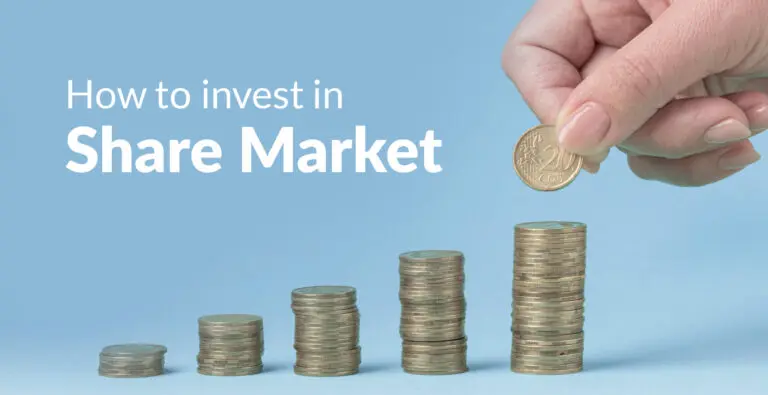
Introduction
Investing is one of the most effective ways to grow wealth over time, yet many beginners hesitate to start due to fear, lack of knowledge, or common misconceptions. If you’ve been wondering how to begin your investment journey, this guide will provide a step-by-step approach to help you invest wisely and confidently.
Let’s break it down into simple and actionable steps! 🚀
Step 1: Understand Why You Need to Invest
Many people hesitate to invest because they fear losing money, but in reality, not investing is the biggest risk due to inflation eroding your savings.
If you keep ₹1 lakh in your savings account with a 3% annual interest rate, but inflation is at 6%, your money loses value over time instead of growing.
Investing helps you beat inflation, grow wealth, and achieve financial independence.
Step 2: Set Clear Financial Goals
Before you invest, define what you want to achieve. Your investment strategy should align with your financial goals and risk tolerance.
✔ Short-Term Goals (1-3 years): Saving for a vacation, emergency fund, or down payment on a car. Choose Fixed Deposits, Debt Mutual Funds, or Recurring Deposits.
✔ Medium-Term Goals (3-7 years): Buying a house, children’s education. Consider Balanced Mutual Funds, Gold ETFs, or Index Funds.
✔ Long-Term Goals (7+ years): Retirement planning, wealth building. Invest in Equity Mutual Funds, Stocks, PPF, or NPS.
Define your goals before investing to choose the right asset allocation.
Step 3: Learn About Different Investment Options
Understanding different asset classes will help you make informed investment decisions.
1️⃣ Stocks (Equity Investing)
- Buying shares of a company makes you a part-owner.
- Potential for high returns over the long term.
- Higher risk, but rewards patience.
If you invested ₹10,000 in TCS in 2004, it would be worth ₹10+ lakh today.
2️⃣ Mutual Funds (SIP & Lumpsum)
- Systematic Investment Plan (SIP): Invest small amounts regularly.
- Lumpsum: Invest a large amount at once.
- Managed by professionals.
A ₹5,000 SIP in Nifty 50 for 10 years would have grown to ₹15 lakh+.
3️⃣ Fixed-Income Investments (Low-Risk Options)
- Fixed Deposits (FDs), Public Provident Fund (PPF), and Bonds offer stable returns.
- Ideal for conservative investors.
PPF offers tax-free interest and safe returns.
4️⃣ Real Estate & Gold
- Gold ETFs and REITs make investing in gold and real estate easier.
✔ Example: Gold prices have consistently risen over decades, making it a good hedge against inflation.
Diversifying across multiple asset classes reduces risk and improves returns.
Step 4: Open an Investment Account
To invest in stocks, mutual funds, or ETFs, you need a Demat and trading account.
✔ Best Investment Platforms in India:
- Zerodha, Upstox, and Angel One are top choices for investing in stocks and mutual funds.
Choose a broker with low fees, good customer support, and an easy-to-use platform.
Step 5: Start with a Simple Investment Portfolio
If you’re a beginner, keep your portfolio simple and diversified:
- 50% in Index Funds (Nifty 50, Sensex) → Market returns with low fees.
- 30% in Debt Funds/PPF → Stability and fixed returns.
- 10% in Gold ETFs → Hedge against inflation.
- 10% in Individual Stocks (Only after research).
A ₹10,000 monthly SIP could be split across Index Funds (₹5,000), Debt Funds (₹3,000), and Gold ETFs (₹2,000).
Don’t invest everything in one place—spread risk wisely!
Step 6: Avoid Common Beginner Mistakes
✔ Emotional Investing: Don’t panic during market crashes—invest for the long term.
✔ Trying to Time the Market: Instead, use SIPs to average out investment costs.
✔ Investing Without Research: Always study a company’s fundamentals before buying stocks.
✔ Ignoring Diversification: Don’t put all your money into one stock or sector.
✔ Not Having an Emergency Fund: Before investing, have at least 6 months of expenses saved.
Learning from mistakes will make you a better investor over time.
Step 7: Monitor and Adjust Your Investments
Investing is not a one-time task—you need to monitor and rebalance your portfolio periodically.
✔ Review Portfolio Every 6-12 Months: Check if your investments align with your goals.
✔ Reallocate Funds if Necessary: If one sector grows too fast, rebalance to maintain diversity.
✔ Increase Investments Over Time: As income grows, increase SIP contributions.
Investing is a long-term journey, not a one-time event.
Conclusion: Take Action & Start Investing Today!
Starting your investment journey doesn’t have to be complicated. Follow these steps to begin investing confidently:
1️⃣ Understand why you need to invest.
2️⃣ Set clear financial goals.
3️⃣ Learn about different investment options.
4️⃣ Open an investment account.
5️⃣ Start with a simple portfolio.
6️⃣ Avoid common mistakes.
7️⃣ Monitor and rebalance regularly.
📌 Final Thought: The best time to start investing was yesterday. The second-best time is today! 🚀